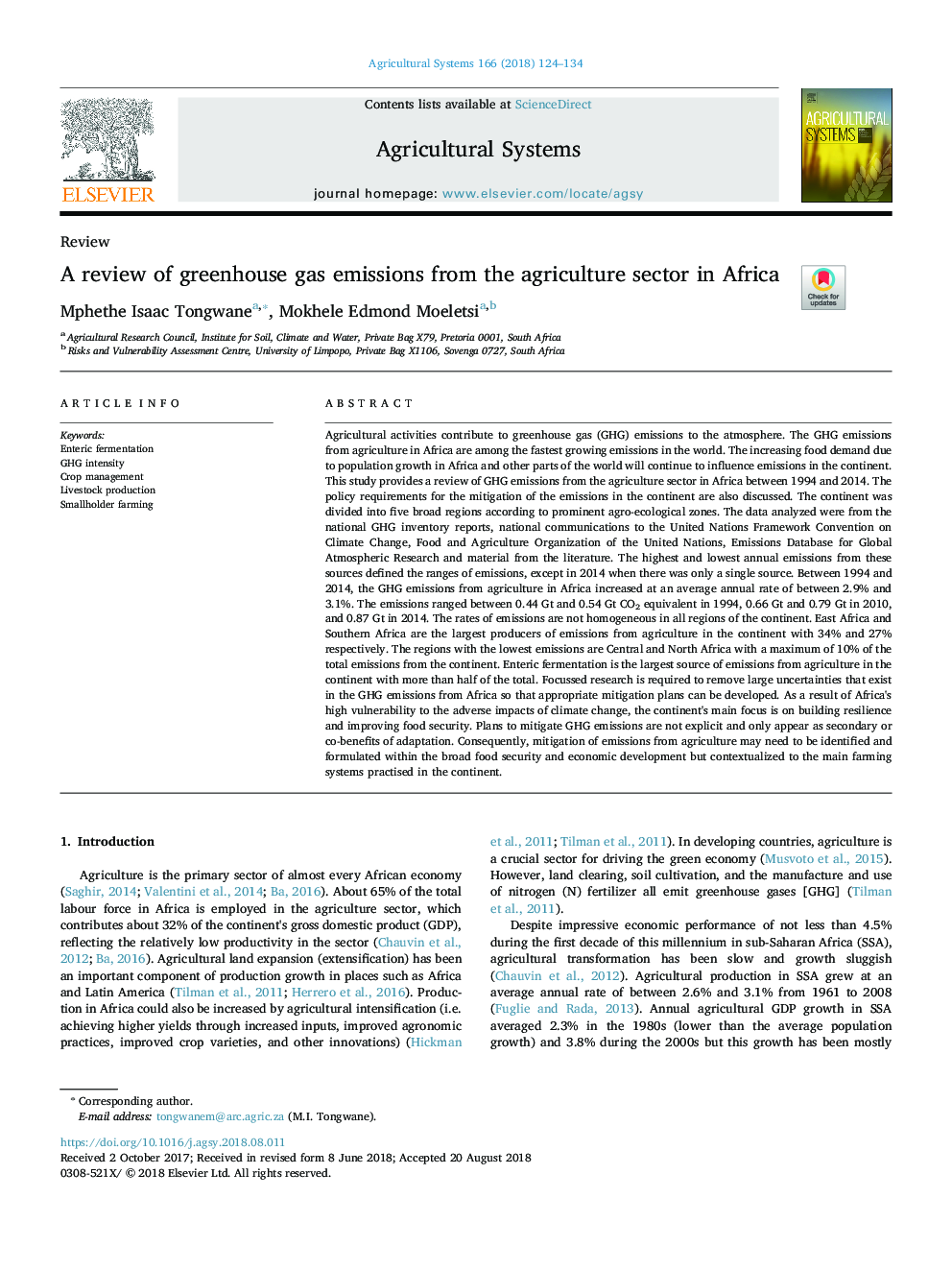| کد مقاله | کد نشریه | سال انتشار | مقاله انگلیسی | نسخه تمام متن |
|---|---|---|---|---|
| 10115999 | 1623204 | 2018 | 11 صفحه PDF | دانلود رایگان |
عنوان انگلیسی مقاله ISI
A review of greenhouse gas emissions from the agriculture sector in Africa
ترجمه فارسی عنوان
بررسی میزان انتشار گازهای گلخانه ای از بخش کشاورزی در آفریقا
دانلود مقاله + سفارش ترجمه
دانلود مقاله ISI انگلیسی
رایگان برای ایرانیان
کلمات کلیدی
موضوعات مرتبط
علوم زیستی و بیوفناوری
علوم کشاورزی و بیولوژیک
علوم کشاورزی و بیولوژیک (عمومی)
چکیده انگلیسی
Agricultural activities contribute to greenhouse gas (GHG) emissions to the atmosphere. The GHG emissions from agriculture in Africa are among the fastest growing emissions in the world. The increasing food demand due to population growth in Africa and other parts of the world will continue to influence emissions in the continent. This study provides a review of GHG emissions from the agriculture sector in Africa between 1994 and 2014. The policy requirements for the mitigation of the emissions in the continent are also discussed. The continent was divided into five broad regions according to prominent agro-ecological zones. The data analyzed were from the national GHG inventory reports, national communications to the United Nations Framework Convention on Climate Change, Food and Agriculture Organization of the United Nations, Emissions Database for Global Atmospheric Research and material from the literature. The highest and lowest annual emissions from these sources defined the ranges of emissions, except in 2014 when there was only a single source. Between 1994 and 2014, the GHG emissions from agriculture in Africa increased at an average annual rate of between 2.9% and 3.1%. The emissions ranged between 0.44 Gt and 0.54 Gt CO2 equivalent in 1994, 0.66 Gt and 0.79 Gt in 2010, and 0.87 Gt in 2014. The rates of emissions are not homogeneous in all regions of the continent. East Africa and Southern Africa are the largest producers of emissions from agriculture in the continent with 34% and 27% respectively. The regions with the lowest emissions are Central and North Africa with a maximum of 10% of the total emissions from the continent. Enteric fermentation is the largest source of emissions from agriculture in the continent with more than half of the total. Focussed research is required to remove large uncertainties that exist in the GHG emissions from Africa so that appropriate mitigation plans can be developed. As a result of Africa's high vulnerability to the adverse impacts of climate change, the continent's main focus is on building resilience and improving food security. Plans to mitigate GHG emissions are not explicit and only appear as secondary or co-benefits of adaptation. Consequently, mitigation of emissions from agriculture may need to be identified and formulated within the broad food security and economic development but contextualized to the main farming systems practised in the continent.
ناشر
Database: Elsevier - ScienceDirect (ساینس دایرکت)
Journal: Agricultural Systems - Volume 166, October 2018, Pages 124-134
Journal: Agricultural Systems - Volume 166, October 2018, Pages 124-134
نویسندگان
Mphethe Isaac Tongwane, Mokhele Edmond Moeletsi,
